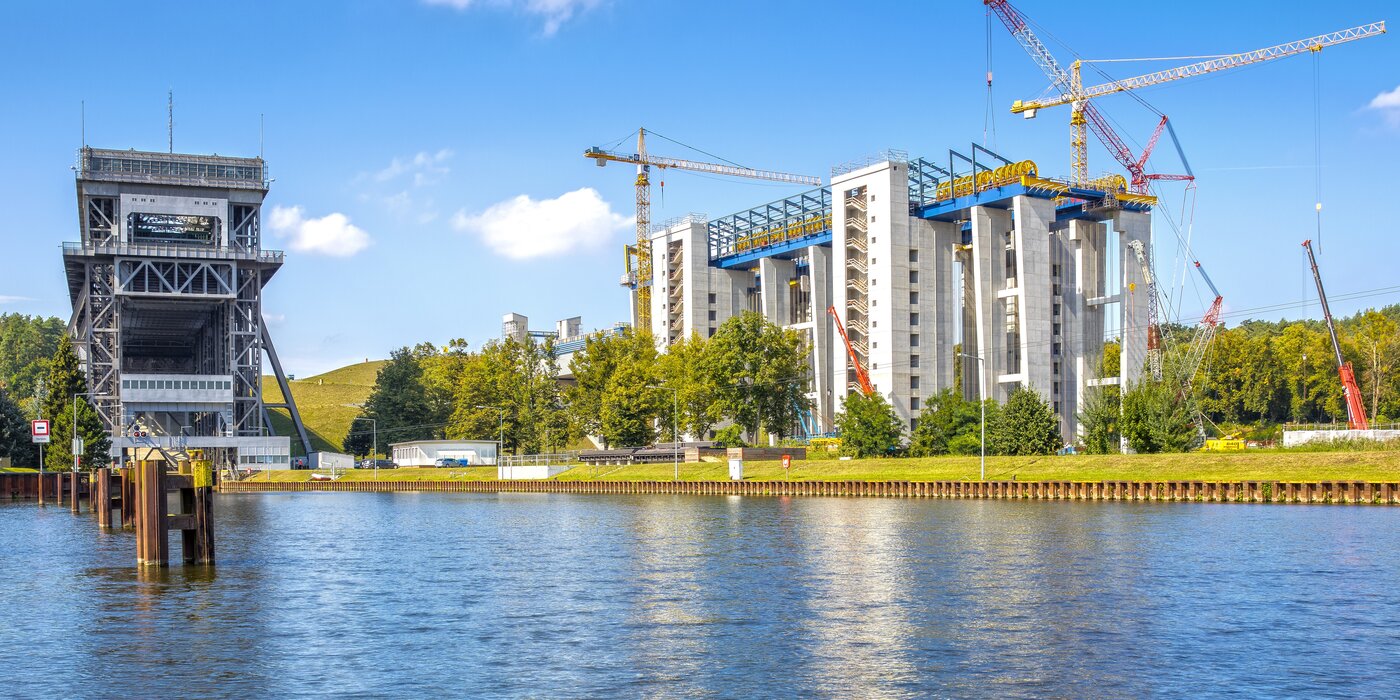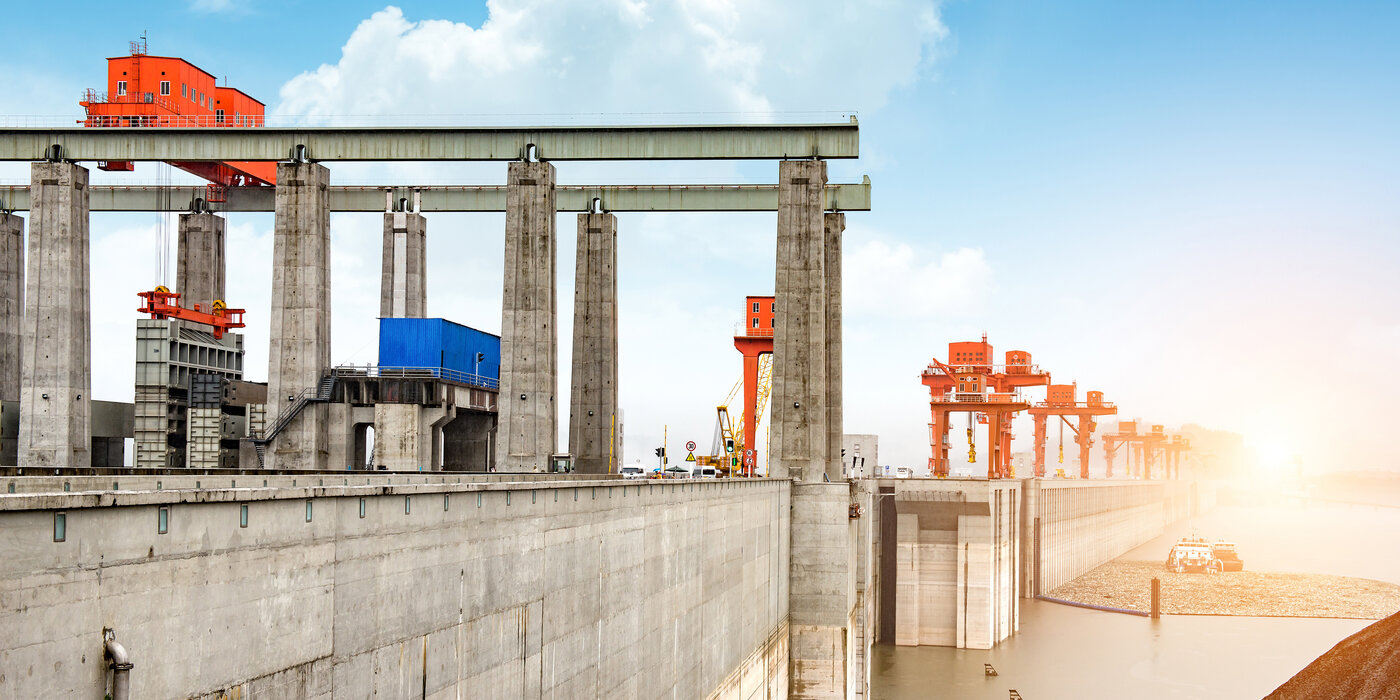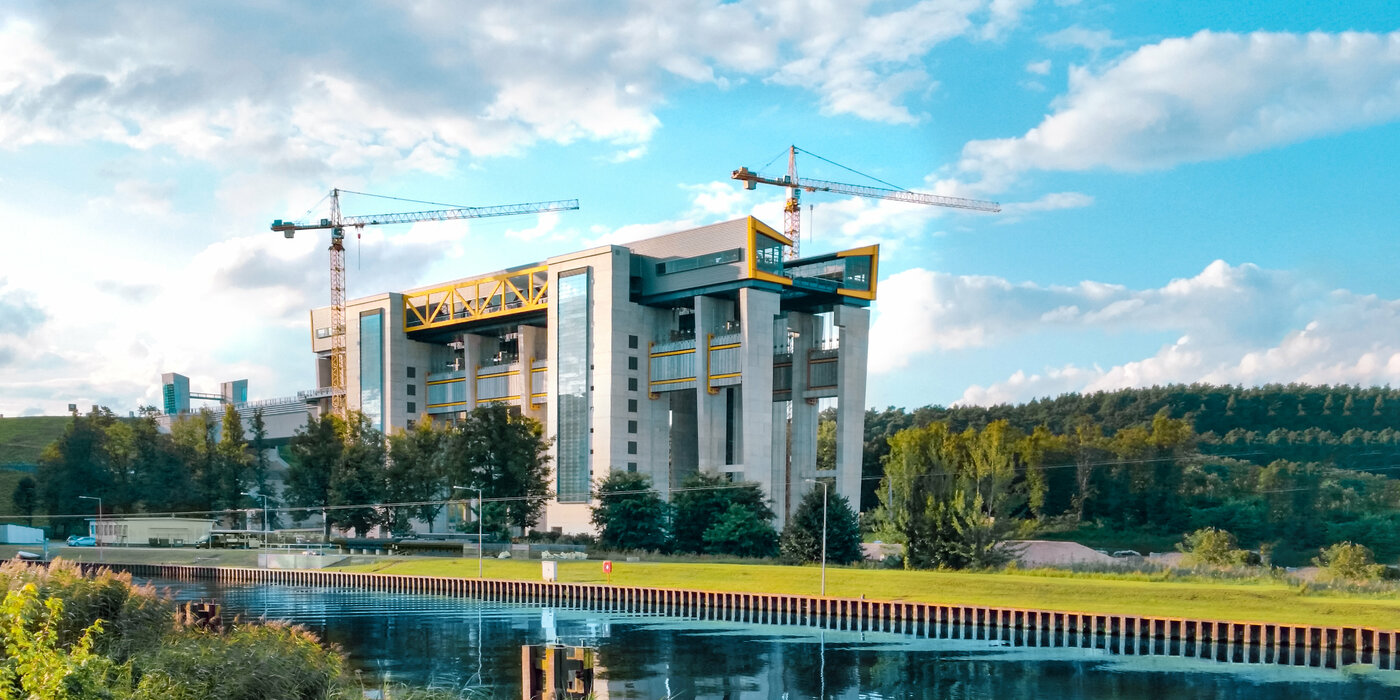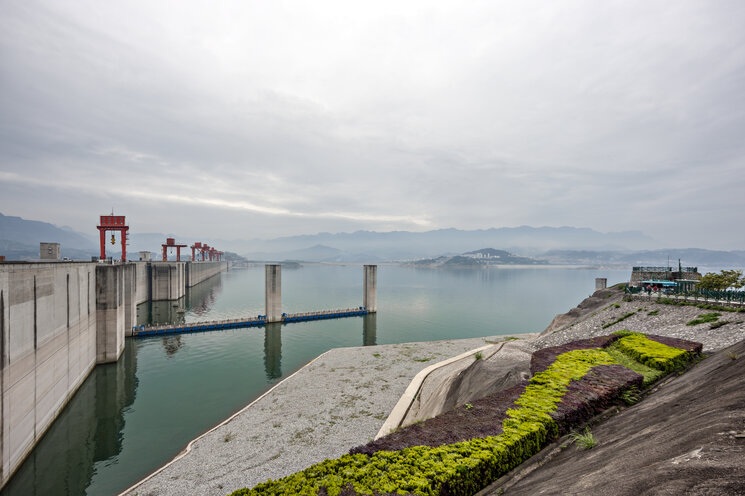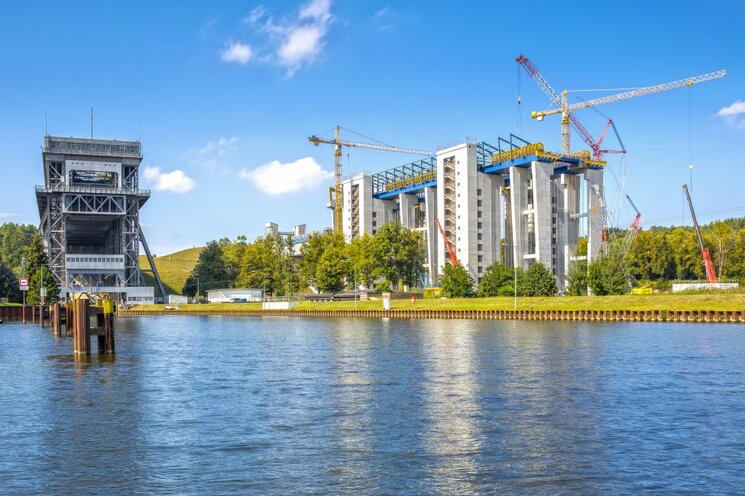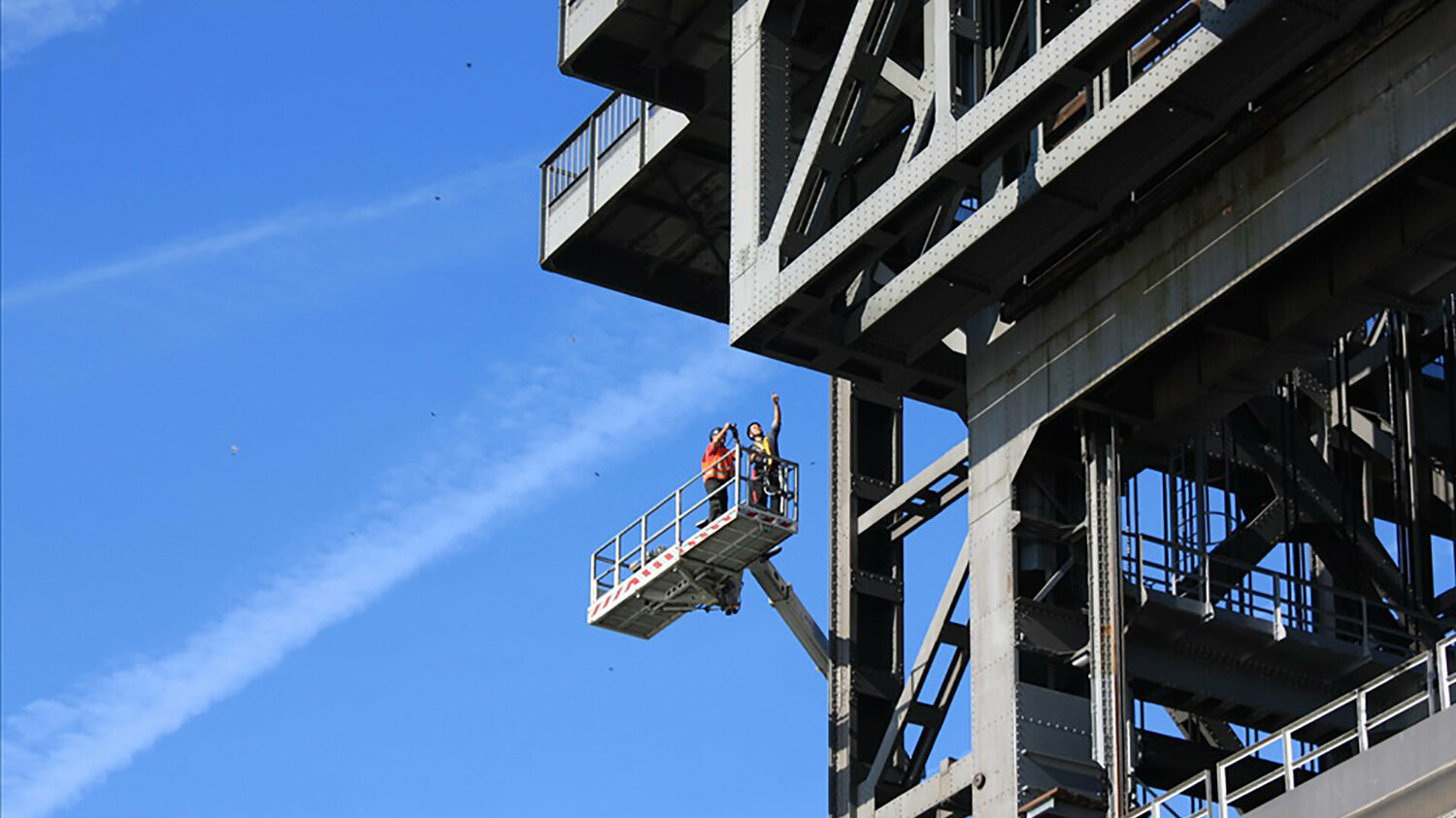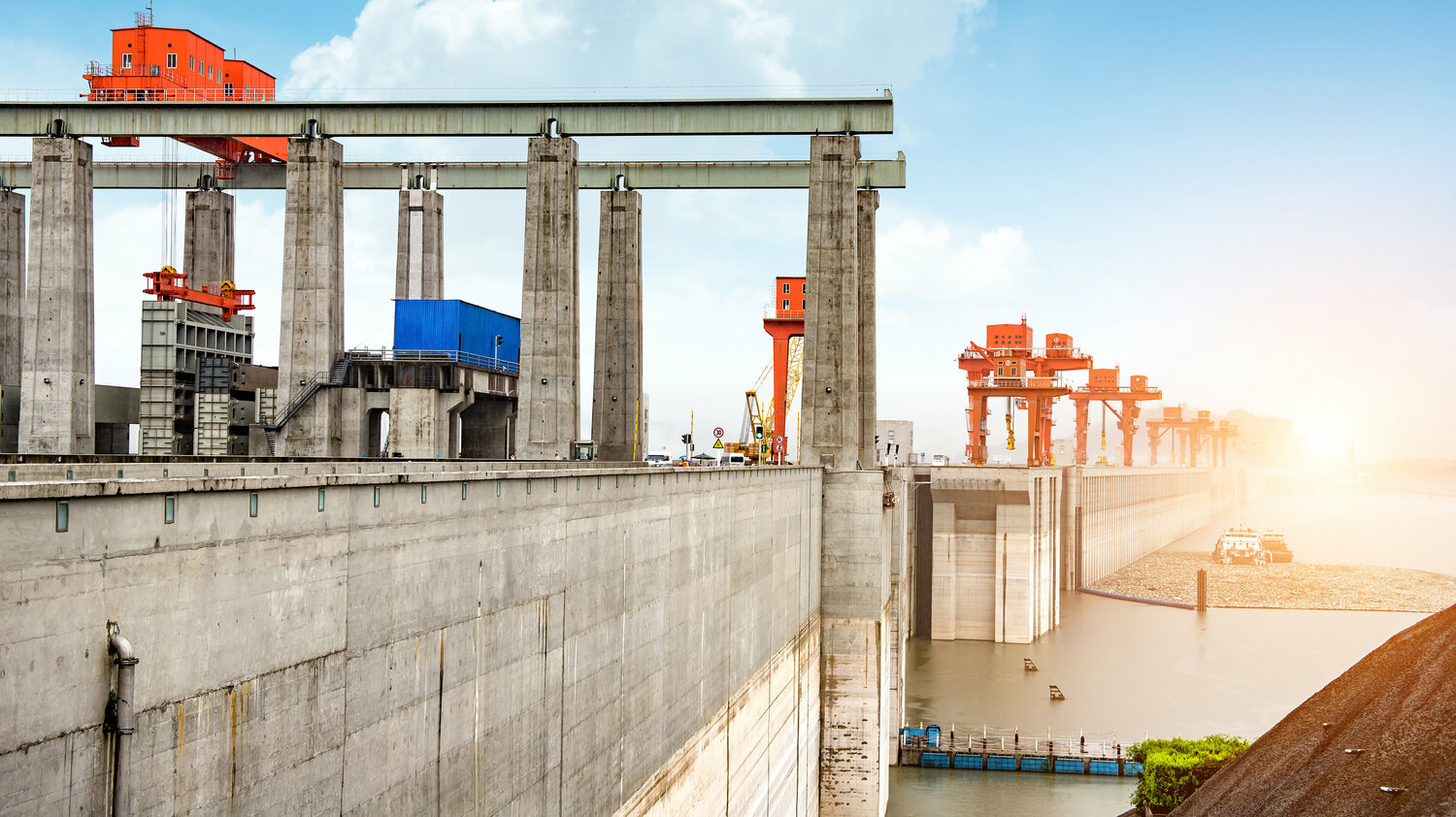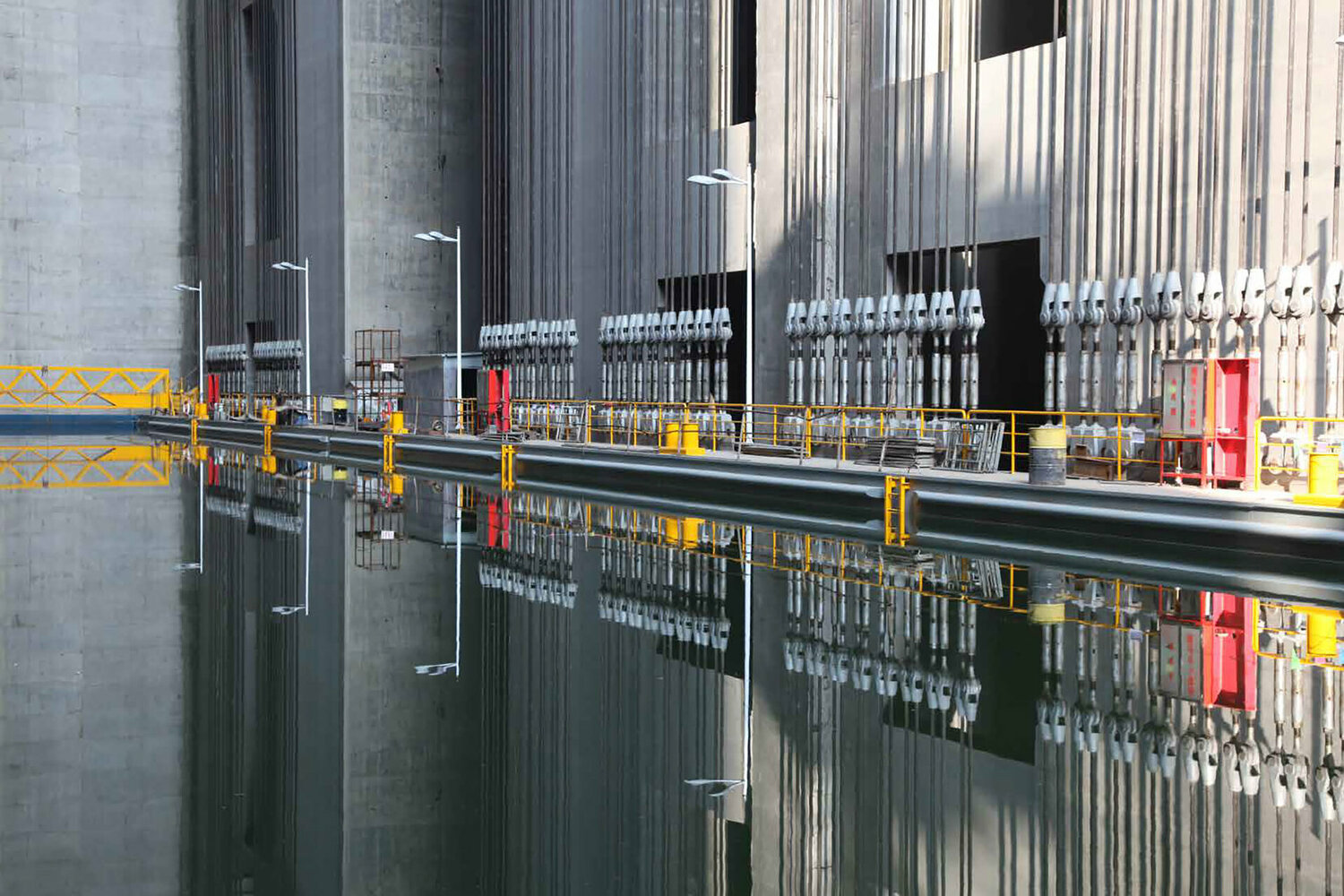Connections for the future – in new dimensions
Inland waterways are indispensable to the economy. Whether transporting ore for the metal industry, fuel for vehicles or consumer electronics from the Far East – every branch of industry uses waterways and relies on well-developed transport routes. As freight traffic continues to grow, infrastructures are increasingly reaching their limits. To expand waterway capacities and make them fit for the future as inexpensive and environmentally friendly transport routes, projects on a completely new scale are now being implemented. Two such projects are the ship lifts in Niederfinow in Germany and at the Three Gorges Dam in China. KREBS+KIEFER played a decisive role in the execution of both these large-scale projects.
A trans-European link from east to west
The ship lift and industrial monument at Niederfinow is located north-east of Berlin. It was opened in 1934 and is at the eastern end of the Oder-Havel Canal, providing a link between Szczecin, the largest port in the Baltic, and Berlin. With the increasing volume of goods and ever larger ships, it had long since reached its limits. Therefore, the new Niederfinow North ship lift was built directly beside it. The aim was to eliminate the bottleneck on the only trans-European east-west waterway link and make it competitive for container transport.
KREBS+KIEFER carried out the structural survey and inspection of the old lift, the entrances and the external facilities. All the as-built drawings were digitised and measuring programmes evaluated. KREBS+KIEFER also carried out the static reviews and recalculations for the aqueduct and the caisson. For the new lift, KREBS+KIEFER carried out the technical review for the solid construction, steel and hydraulic engineering, mechanical engineering and earthwork.
Three structures in one.
What this meant for the planning was that the structure had to be able to accommodate and transport two-tier container ships, unseparated pushed convoys and large motor vessels. As a result, three different structures were built directly beside the old lift. The first is the lift itself, in which a 9,800 tonne caisson is moved on the counterweight principle using cables and pulleys, overcoming a height difference of 36 metres. Then there is the 66-metre-long aqueduct, through which the ships enter the caisson from upstream, and finally there are two new canal sections which serve as entrance and exit docks.
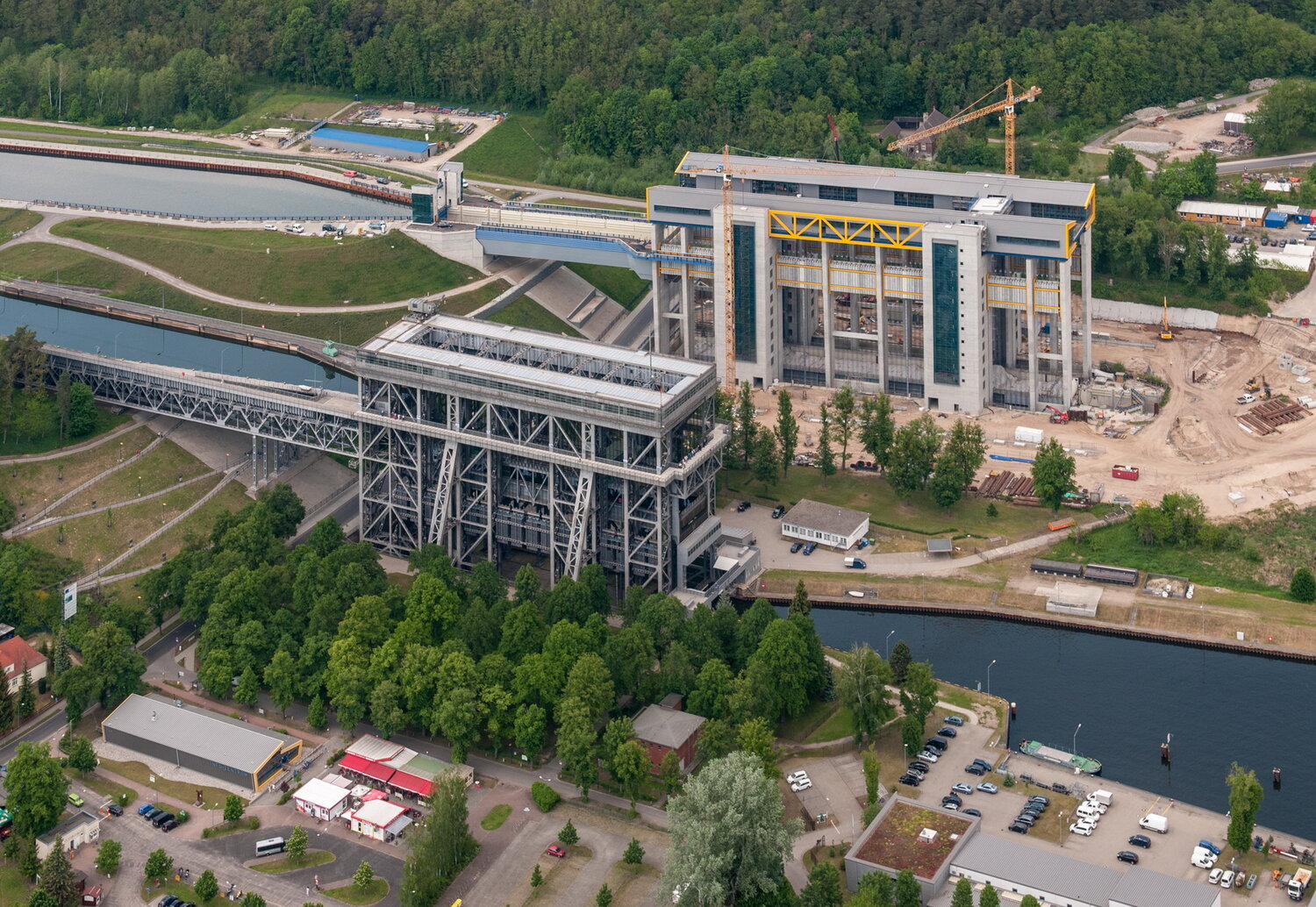
Complex hybrid construction
The complex mixture of steel and solid construction with sophisticated design elements required special solution concepts in the planning. For example, an unobstructed view had to be guaranteed when entering the lift. Therefore, the structure could not have cross braces. This made it a particular challenge to calculate the resulting deformation of the machine frame under weight load in normal operation so that safe transport would be possible. It was ensured by means of complex guiding devices that continually correct the position of the caisson between the pylons.
The requirements in this project for accuracy of construction went far beyond the usual extent, with tolerances of only a few millimetres. Through comprehensive finite element simulations, we were able to achieve this accuracy – particularly with regard to the interaction between the structure and the ground, as well as deformation under different construction and operating conditions.
Since the foundation stone was laid in 2009, more than 800,000 m3 of earth have been moved in Niederfinow, and 70,000 m3 of concrete, 4,500 tonnes of reinforcing steel and 32,000 m2 of sheet piling installed. KREBS+KIEFER carried out technical reviews, creating a solid basis for implementing the project and thus making the Oder–Havel Canal competitive again. This will strengthen the Germany economy and by 2025 the old ship lift will finally be nothing more than an industrial monument.
Almost at the same time, KREBS+KIEFER was participating in the construction of the largest ship lift in the world.
China’s vital artery
At 6,380 kilometres the Yangtze is the longest river in Asia. Navigable for 2,800 kilometres, it is the world’s busiest inland waterway and has been China’s main economic and cultural artery for centuries. Plans for a dam go all the way back to the beginning of the last century. The intention was to protect highly populated cities from flooding, to make the river easier to navigate and to generate power. In 1992, work began on the biggest hydraulic engineering project in history.
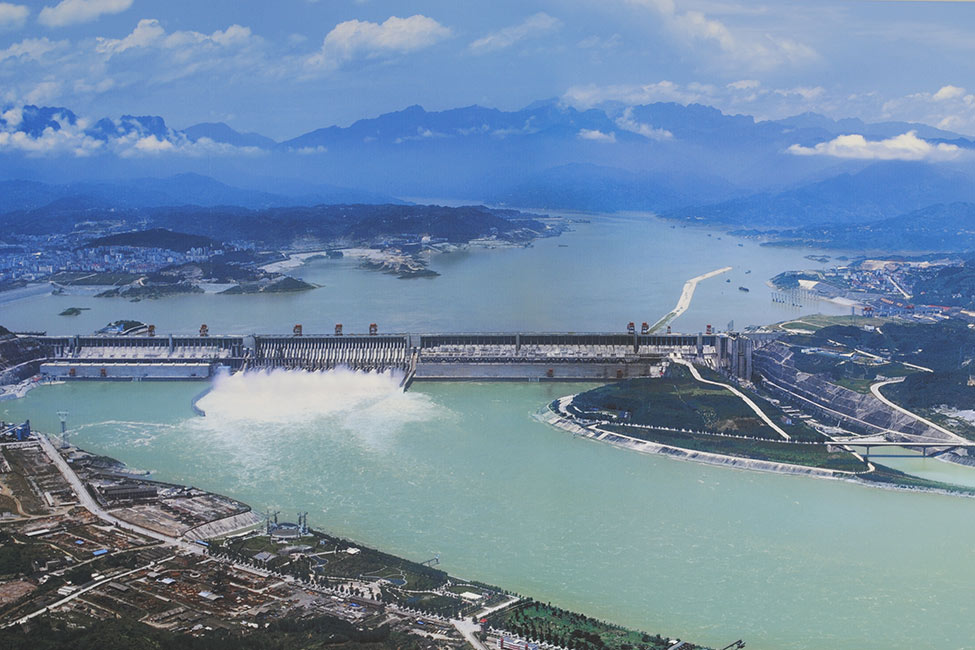
Unprecedented dimensions
The Three Gorges Dam is a structure of superlatives: The 2.3-kilometre-long, 185-metre-high gravity dam regulates a hydraulic catchment area of more than a million km2 and creates a reservoir up to 660 km long. In its two power plants, 27 water turbines generate an enormous 85 terawatts of power annually. A five-stage lock ensures that ships can pass the dam and overcome the height difference of 113 metres.
The largest ship lift in the world
In 1999 KREBS+KIEFER played a major part in a feasibility study coordinated by the Federal Waterways Engineering and Research Institute for the construction of a lift for passing shipping. In 2004 KREBS+KIEFER took over the design and tender planning for the solid construction and the steel hydraulic engineering of the complete ship lift.
The project differed from all the other ship lifts ever built in a number of ways: With a lifting height of 113 metres, it was three times higher than any ship lift in Germany. The size of the caisson meant that an enormous weight of 34,000 tonnes had to be moved using counterweights. In addition, water level variations of up to 30 metres upstream and 12 metres downstream had to be taken into account in the entrance and exit areas. Another factor that had a significant influence on the design of the structure was that earthquakes can set off massive movements of water that which would act as additional loads.
The world’s largest ship lift was built exclusively by Chinese companies and went successfully into operation in 2016. It reduces the travel time for ships from almost 4 hours to 40 minutes.
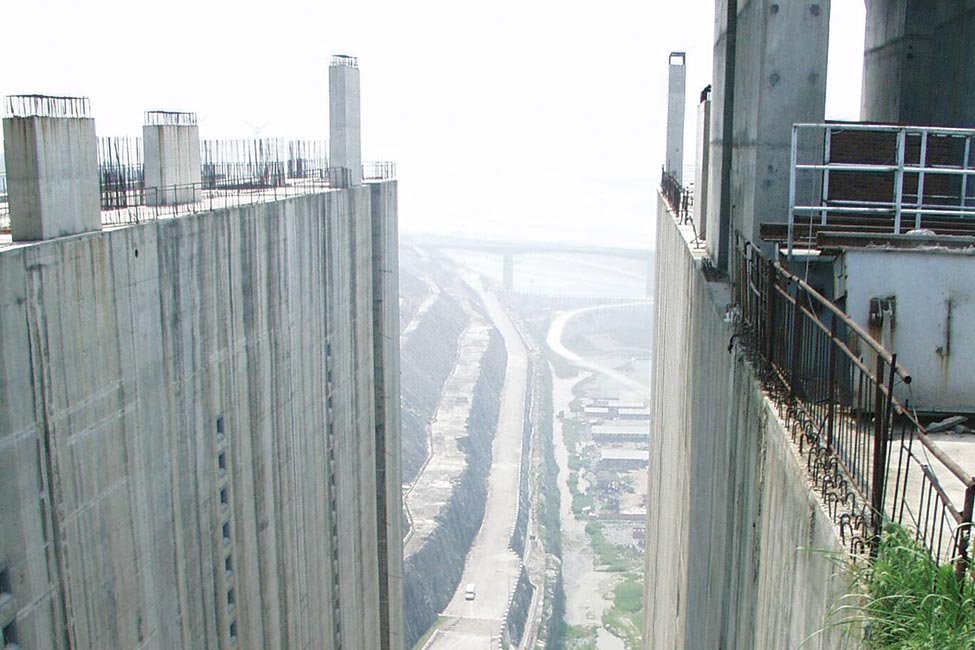
Full speed ahead
Projects such as the ship lifts in Niederfinow and at the Three Gorges Dam are what inspire our engineers to constantly create works of the highest quality in order to shape the future. Our experience and the courage to break new ground are part of the KREBS+KIEFER DNA, and for 70 years have enabled us to realise seemingly impossible projects and continually set new standards. We create the basis for connecting people and goods and for bringing them together. From Szczecin to Berlin, from Chongqing to Nanjing and wherever else connections are needed.
